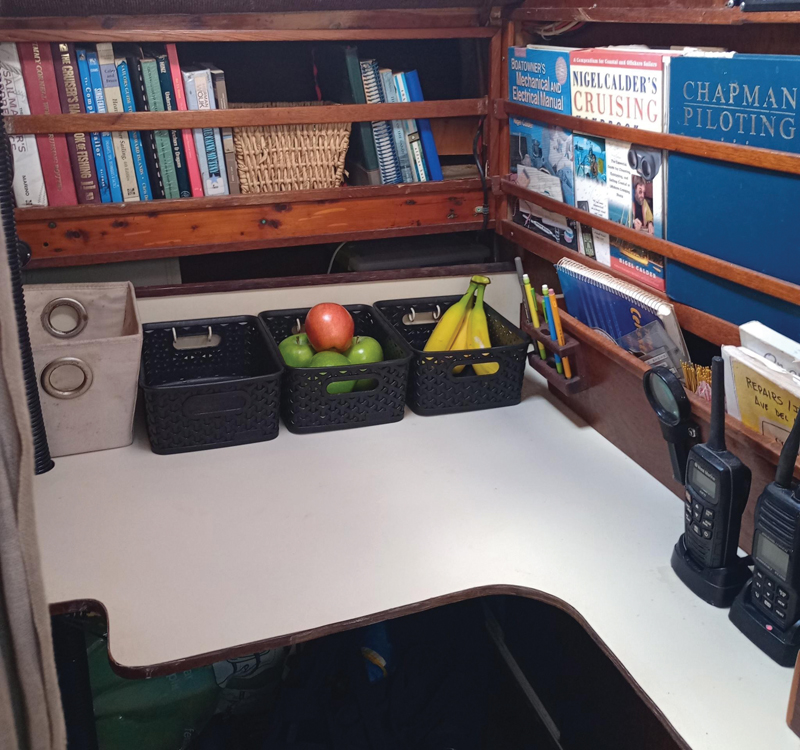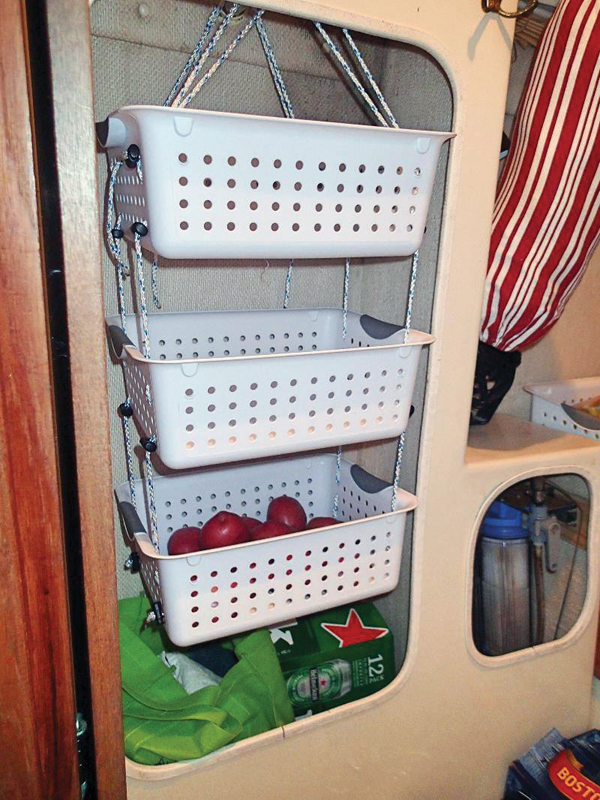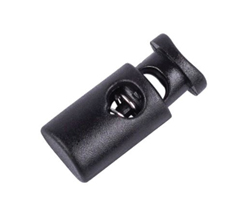![]()
Onboard fruit and vegetable storage
On a sailboat, fruit and vegetable storage in a macrame hammock may seem ideal, but it has a few drawbacks that include motion (ripe fruit’s enemy) and pressure (ripe fruit’s other enemy). Here is a great DIY alternative.

The vision in my head... and then the real world
So much of the cruising world is rife with lore from which you try to learn what there is to learn. For me this lore lived among the stories told in books about ocean-crossing vessels, books that sat stacked up on my nightstand, dog-eared and well annotated. The best of these had photos. The photos fascinated me like a portal to a magical world I couldn’t rightfully picture. I would pore over the pictures, envisioning myself out at sea in my small boat, battling the elements and sipping coffee as I watched the sunrise. In my head, I could see belowdecks where an oil lamp radiated light onto a teak bulkhead, steam rose form the kettle in the galley, and a bounty of fresh tropical fruits swung to and fro in a small macrame hammock.
I’m not here to burst any bubbles, but I would like to explain why the fruit-hammock part of my vision was slightly faulty. Oh, fruit hammocks do exist. I have one on my boat that an Instagram follower knit for me as a gift. I use it all the time. What I have learned is that these hammocks have a few drawbacks that include motion (ripe fruit’s enemy) and pressure (ripe fruit’s other enemy). There is a great alternative that is not only cheap but also easy as pie to DIY—a perforated plastic bin.
Easy DIY alternatives
Picture a plastic tub perhaps the size of a shoebox with a solid bottom and perforated sides. The sides allow air to flow through, helping to keep the contents fresh, and the solid bottom helps if you’ve gotten a rotting apple or a squished tomato. The last thing you need is for rotting fruit to cascade down like nasty fruit-lava, ruining innocent stores below.
When talking storage, rectangular or square is always better on a boat as it allows you to use all of any given space. On Ave del Mar I found a section of countertop in what I call “my office” that served little purpose. I measured it and went hunting, eventually finding the perfect containers at a local dollar store. Three of them would fit perfectly side-by-side next to a small rectangular canvas bin. I set them out and marked where the cut-out handles hit the wall and installed two cup hooks per bin, ensuring that the fruits and vegetables couldn’t go anywhere without my permission while I could still easily pop the tubs out for a cleaning.
The hammock I mentioned exists in that same office space in addition to the new bins. I have a small shock cord that I use to clip it to the bulkhead when I am underway, preventing it from hitting the portlight as the boat rolls. Another drawback of hammocks is that the weight of the contents causes the strands of yarn or string to press into the fruit, causing bruising and loss. Because of this, Ave’s holds only the newest, greenest (and hardest) fruits and vegetables, and as they ripen, I move them down into the bins where they are more protected. If you plan to deploy a hammock of any sort, try for one that has thicker strands that are gentler on its contents.

My friend Carolyn Shearlock of The Boat Galley took a different path towards a similar solution. While she lacked counter space, she had a wet locker that was being loosely used as a pantry, and in that locker she made a series of hanging baskets. She bought Sterilite bins thinking that she could run a section of quarter-inch line through the holes to support them but soon realized that the plastic was pliable enough that any knot would eventually slip through. Additionally, trying to tie four knots per bin at the exact same height would be a challenge to even the most capable of sailors. She solved this problem with cord locks, those springy two-piece plastic gizmos often found on drawstrings of backpacks and laundry bags. These made the spacing of the baskets imminently adjustable. They were wide enough to not pop through the hole when the baskets were fully loaded.

Odds are that if I’ve learned these three tricks, there are probably plenty more than I haven’t ever heard about—but these three work, and they work well. Look at your space and think about how a series of plastic bins might help you lengthen the life of your produce. Then get crafty, get them installed, and get sailing.
And think of me when you munch on that perfect apple offshore.
What I learned:
- Storage hammocks with thicker yarns are easier on fruits and vegetables.
- Plastic bins that have perforated sides and solid bottoms work best.
- Make sure your storage containers are well secured for rougher conditions.
- Check all contents frequently to catch the bad apple before it spoils the bunch.
- Square corners mean more efficient use of available space.
by John Herling
About the Author: John Herlig lives aboard his 1967 Rawson cutter Ave del Mar and teaches at Cruisers University. Find him on Instagram @sailing-ave.
Find more sailing-related how-to articles here.
Whether you race your boat or not, you are a sailor. That’s good. Because at Harken, we make products for sailors. A big part of what we love about this sport is the self-reliance it demands and finds within us. That’s why we’re sponsoring this DIY/skills-building section.
PS: If you find there’s a little too much “Y” in your DIY project, call (262) 701-5747. Jim and team will put the “us” back in DIY.




